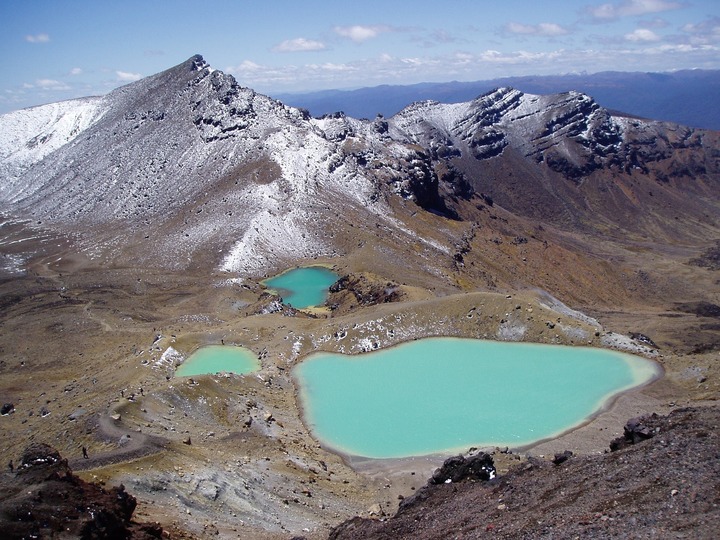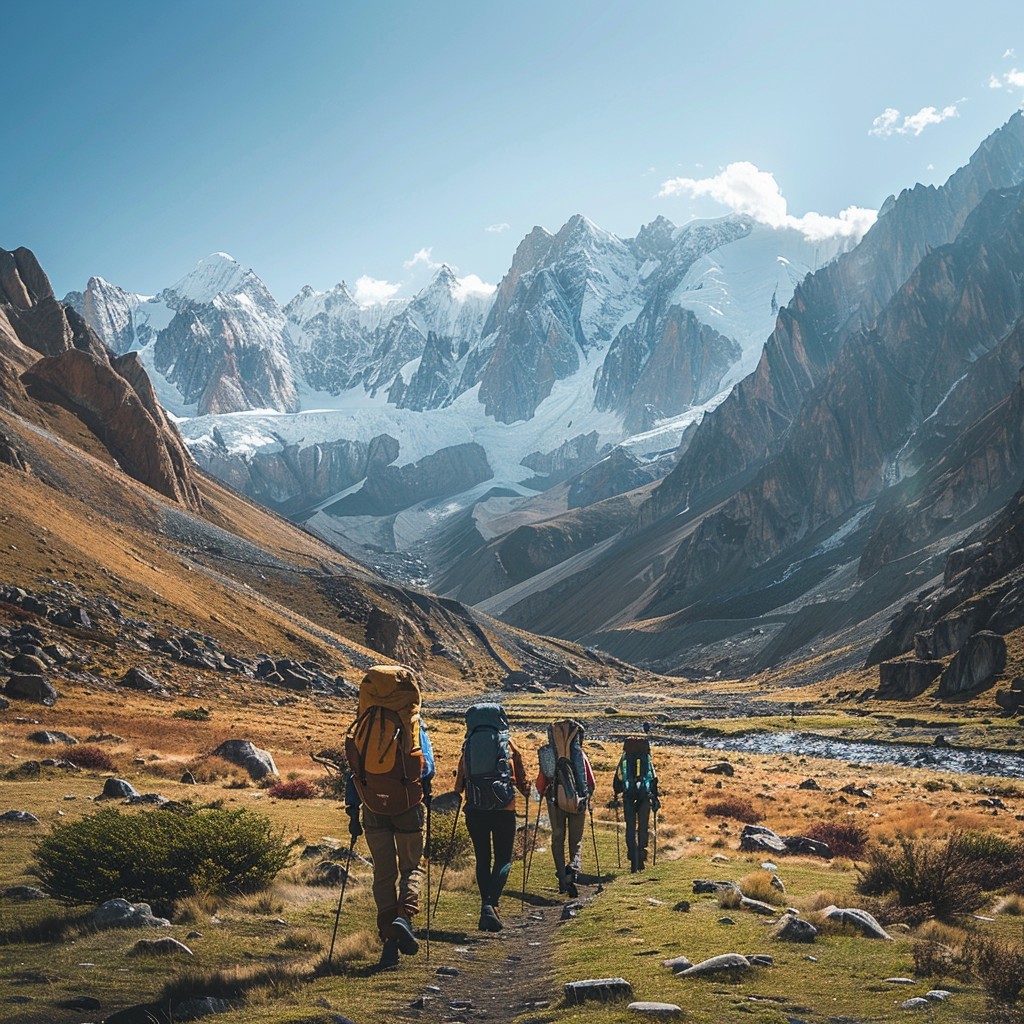
The Tongariro Crossing, often hailed as one of the world’s finest one-day hikes, offers more than just breathtaking scenery. For those interested in exploring this incredible route, the Tongariro Alpine Crossing provides detailed information and resources to help you plan your adventure.
This iconic trail is steeped in rich history and cultural significance, making it a unique and meaningful journey for those who tread its paths.
Whether you’re planning a visit or simply curious about this legendary trek, this guide provides an in-depth look into its history, cultural importance, and practical advice for your adventure.
Common Questions and Concerns
Before we delve into the detailed history and significance of the Tongariro Crossing, let’s address some of the most common questions and concerns hikers and curious readers might have:
- What is the Tongariro Crossing?
- Why is it culturally significant?
- What historical events are tied to this area?
- How can I prepare for the hike?
- What are the main attractions along the trail?
- Are there any safety tips I should know?
- What’s the best time of year to hike the Tongariro Crossing?
- How can I respect the cultural and environmental significance of the area?
What is the Tongariro Crossing?
Overview of the Trail
The Tongariro Alpine Crossing is a 19.4-kilometer trek through the volcanic terrain of Tongariro National Park, located in the central North Island of New Zealand.
The trail passes through a range of dramatic landscapes, including active volcanoes, craters, emerald lakes, and ancient lava flows.
This diversity makes it a popular destination for hikers from around the globe.
A Journey Through Diverse Landscapes
Starting from the Mangatepopo Valley and ending at the Ketetahi Road, the crossing takes between 7 to 9 hours to complete, depending on your pace and the time spent at various points of interest.
The journey is a feast for the eyes, with each section of the trail offering unique geological and scenic features.
Why is it Culturally Significant?
The Spiritual Significance to the Māori
The Tongariro National Park holds immense cultural and spiritual significance for the Māori people, particularly the local iwi (tribes) of Ngāti Tūwharetoa.
The mountains within the park, including Tongariro, Ngauruhoe, and Ruapehu, are considered sacred.
They are seen as physical representations of ancestors and deities, playing a crucial role in Māori mythology and traditions.
Māori Mythology: According to Māori legend, the mountains were once warriors who fought for the favor of the beautiful Pihanga. Tongariro emerged victorious, and the defeated mountains retreated, creating the dramatic landscape we see today.
Chief Te Heuheu Tukino IV’s Gift
In 1887, Chief Te Heuheu Tukino IV made a historic decision to gift the sacred peaks of Tongariro, Ngauruhoe, and part of Ruapehu to the people of New Zealand.
This act of generosity was aimed at preserving the cultural and spiritual integrity of the area while preventing it from falling into private ownership.
His gift laid the foundation for the establishment of Tongariro National Park, New Zealand’s first national park and the fourth in the world.
Relatable Example: Picture walking through a landscape where every rock and ridge has a story that connects the present to the ancient past. This historical and cultural backdrop adds a profound layer to the physical challenge and beauty of the hike.
The Formation of the Landscape
Volcanic Activity and Geological Evolution
The Tongariro National Park is situated in the Taupo Volcanic Zone, an area known for its intense geothermal activity.
The park’s three active volcanoes—Tongariro, Ngauruhoe, and Ruapehu—have been shaping the landscape for over 275,000 years through a series of eruptions and lava flows.
Key Geological Features:
- Tongariro: The oldest volcano in the group, with multiple vents and craters.
- Ngauruhoe: The youngest and most active cone, which last erupted in 1975.
- Ruapehu: The tallest and most prominent peak, with a history of significant eruptions and a crater lake.
The Impact of Eruptions
The frequent volcanic activity has created a rugged and varied terrain, featuring everything from barren lava fields to lush alpine meadows.
The last major eruption in the area was Ruapehu’s 1995-1996 event, which dramatically altered parts of the landscape and serves as a reminder of the region’s dynamic nature.
Personal Story: On a recent hike, I found myself in awe of the raw power of nature, imagining the fiery forces that shaped the rugged path beneath my feet. This realisation added a deeper appreciation for the trail and its ever-evolving beauty.
Preparing for the Hike
Essential Tips for a Safe Journey
Hiking the Tongariro Crossing requires preparation and respect for the environment.
Here are some tips to ensure a safe and enjoyable experience:
- Check the Weather: The weather in the alpine environment is highly unpredictable. Always check the forecast before setting out and be prepared for sudden changes.
- Wear Appropriate Gear: Sturdy hiking boots with good ankle support, layered clothing for varying temperatures, a hat, and sunscreen are essential.
- Pack Wisely: Bring plenty of water (at least 2 litres), high-energy snacks, a first aid kit, and a map. There are no facilities along the trail, so come prepared.
- Start Early: To avoid the midday heat and crowds, begin your hike early in the morning.
- Respect the Environment: Stay on marked paths to protect the fragile ecosystem and respect the cultural significance of the area.
Personal Anecdote: On my first hike, I underestimated the importance of proper footwear. By the end of the day, my feet were blistered, and I was exhausted. Now, I never hit the trail without my trusty hiking boots and a good pair of wool socks.

Highlights of the Tongariro Crossing
Mangatepopo Valley
The journey begins in the Mangatepopo Valley, where the landscape is characterised by ancient lava flows and tussock-covered terrain.
The valley is flanked by the dramatic cone of Mount Ngauruhoe, providing an iconic start to the hike.
Point of Interest: Take a moment to explore the Mangatepopo Hut, a popular spot for overnight hikers and a great place to learn more about the area’s history and geology.
Soda Springs and South Crater
A gentle climb from the valley leads to the Soda Springs, a small waterfall that provides a refreshing break.
This section of the trail is relatively easy, allowing you to acclimate before the steep ascent ahead.
South Crater: The climb to the South Crater is challenging but rewarding. The vast, flat expanse of the crater feels like walking on another planet, with its barren, moon-like surface.
Red Crater and Emerald Lakes
The ascent to Red Crater is one of the most demanding parts of the hike, but the panoramic views from the top are worth the effort.
The vibrant red rocks, caused by oxidised iron in the soil, create a striking contrast against the blue sky.
Emerald Lakes: Descending from Red Crater, you’ll encounter the stunning Emerald Lakes. The bright green colour of these lakes is due to minerals leaching from the surrounding thermal areas. This is a great spot to take a break and capture some unforgettable photos.
Personal Anecdote: During my hike, I spent a long time at the Emerald Lakes, mesmerised by their surreal beauty. The way the lakes shimmered in the sunlight felt like a scene straight out of a fantasy novel.
Blue Lake and Ketetahi Hot Springs
After passing the serene Blue Lake, a sacred site to the Māori, the trail begins its descent towards the Ketetahi area.
This section offers a mix of lush native forest and geothermal vents, providing a diverse end to the hike.
Ketetahi Hot Springs: While access to the hot springs is currently restricted to protect the area, you can still enjoy the steaming vents and bubbling mud pools from a distance.
Additional Points of Interest
- Mount Ngauruhoe: For the adventurous, a side trip to the summit of Mount Ngauruhoe (Mount Doom from “The Lord of the Rings”) offers a challenging but rewarding climb.
- Tongariro Summit: Another optional detour, the Tongariro Summit provides panoramic views of the entire park and beyond.
Respecting the Cultural and Environmental Significance
Understanding and Honouring Māori Traditions
When hiking the Tongariro Crossing, it’s important to remember that you’re walking through a landscape of deep cultural and spiritual significance.
Respect for the land and the traditions of the Māori people is paramount.
- Stay on Designated Paths: This helps protect the environment and avoids disturbing sacred sites.
- Do Not Remove Natural Features: Rocks, plants, and other natural elements should remain undisturbed.
- Leave No Trace: Pack out all rubbish and respect the natural beauty of the area.
Engagement Tip: Share your thoughts on how we can all contribute to preserving the Tongariro Crossing for future generations in the comments below.
Best Time to Hike the Tongariro Crossing
Seasonal Considerations
- Summer (December to February): This is the most popular time to hike, with warmer temperatures and longer daylight hours. However, it can also be crowded.
- Autumn (March to May): A great time to hike with cooler temperatures and fewer crowds. The autumn colours add a beautiful dimension to the landscape.
- Winter (June to August): The trail is often covered in snow and ice, making it suitable only for experienced hikers with alpine equipment.
- Spring (September to November): Melting snow can make the trail muddy, but the blooming wildflowers and new growth are a sight to behold.
Personal Stories and Experiences
Personal Story: One autumn, I hiked the Tongariro Crossing and was treated to a spectacular display of red, orange, and yellow foliage. The crisp air and quiet trails made it a serene and memorable experience.
Personal Tip: Whenever you choose to hike, always check the weather conditions and trail status beforehand. The alpine environment can be unpredictable, and safety should always be your top priority.
Conclusion
Hiking the Tongariro Crossing is more than just a physical challenge—it’s a journey through time, culture, and nature.
The rich history and cultural significance of the area add layers of meaning to every step, making it a truly unique experience.
Whether you’re drawn to the striking volcanic landscapes, the spiritual significance of the mountains, or the sheer adventure of the hike, the Tongariro Crossing offers something for everyone.
By understanding and respecting the history and cultural significance of the Tongariro Crossing, we can all contribute to preserving this magnificent trail for future generations.
From the sacred peaks gifted by Chief Te Heuheu Tukino IV to the stories embedded in the volcanic rocks, every aspect of this hike invites you to connect deeply with the land and its heritage.
So lace up your hiking boots, pack your essentials, and embark on a journey that promises not only breathtaking views but also a profound connection to one of New Zealand’s most treasured landscapes.
Share your experiences, respect the environment, and take with you memories that will last a lifetime.





